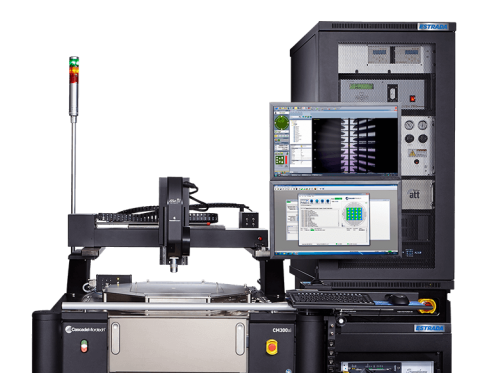
April 26, 2018
New wafer level electromigration (EM) test capabilities offer remarkable benefits which complement traditional package level EM, with perfect data correlation.

April 26, 2018
New wafer level electromigration (EM) test capabilities offer remarkable benefits which complement traditional package level EM, with perfect data correlation.
Late last year we published a blog that highlighted three key advantages of wafer-level reliability (WLR) electromigration (EM) testing versus package-level reliability (PLR) testing. To recap, they were:
New wafer level electromigration test capabilities offer remarkable benefits which complement traditional package level EM, with perfect data correlation between those methods. Decades of industry interconnect testing have yielded an enormous library of baseline reference data and trust in the EM PLR method. Some alternative EM WLR methods have been created and deployed as a process control monitor, but these have not always correlated well with PLR. In order to analyze EM WLR data coincident with EM PLR data, the devices must be stressed and monitored in the same way. Correlation studies have fortunately shown that with an appropriate EM wafer test system (using a high-temperature thermal chuck and providing oxygen-free environment for structures with exposed copper) this is indeed possible.
In these studies, the same traditional, constant current stress bias was applied to devices under test (DUTs) from the same wafer process, using both WLR and PLR methods, to compare results. A two-tailed test of means confirmed matching results for the initial resistance (R0) data sets from both methods. More importantly, the DUT failure times from WLR and PLR were compared. The lognormal plots depicting the progression of DUT failures over time under stress visually matched, and were further treated with the Wilcoxon Group Homogeneity test to quantifiably conclude that the EM PLR and EM WLR results were statistically indistinguishable.
The net result of this strong correlation is that EM PLR and EM WLR data can indeed be used interchangeably and blended for analysis via Black’s Equation for establishing Arrhenius and current density acceleration factors and predicting IC lifetime under use conditions. Reliability test labs may therefore select the optimum mix of WLR and PLR capabilities to best meet their demands, processes, and budgets. For example, a test program might continue to utilize PLR for slower, less accelerated tests, but apply WLR for the faster tests, and then combine data into one analysis.
WLR offers three key advantages to a reliability test program compared to PLR: faster time to test results, reduced operating expense, and improved data integrity. With proper equipment capable of high test temperatures up to 350°C and purging oxygen from the test environment, these benefits can even be realized for copper electromigration testing which has long been the domain of PLR alone. Intrinsic EM WLR test results correlate well with PLR. Therefore, EM WLR can be an extremely valuable contributor to any robust and efficient reliability test program.
Accelerate your reliability program with electromigration test directly on wafer. Check out our Estrada-EM product line to select the system that will help you discover solutions that immediately enhance accuracy and efficiency.